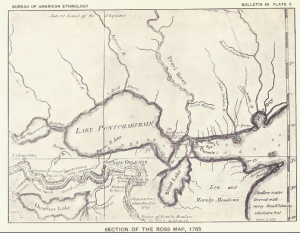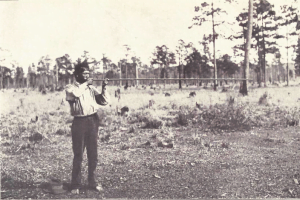Okwa Naholo
The Okwa naholo (“White People of the Water”) dwell in deep pools in rivers and bayous. There is said to be such a place in the Abita River; the pool is clear and cold and it is easy to see far down into the depths, but the surrounding water of the river is dark and muddy. Many of the Okwa naholo live in this pool, which is known to all the Choctaw. As their name signifies, the Okwa naholo resemble white people more than they do Choctaw; their skin is rather light in color, resembling the skin of a trout. … Read more



